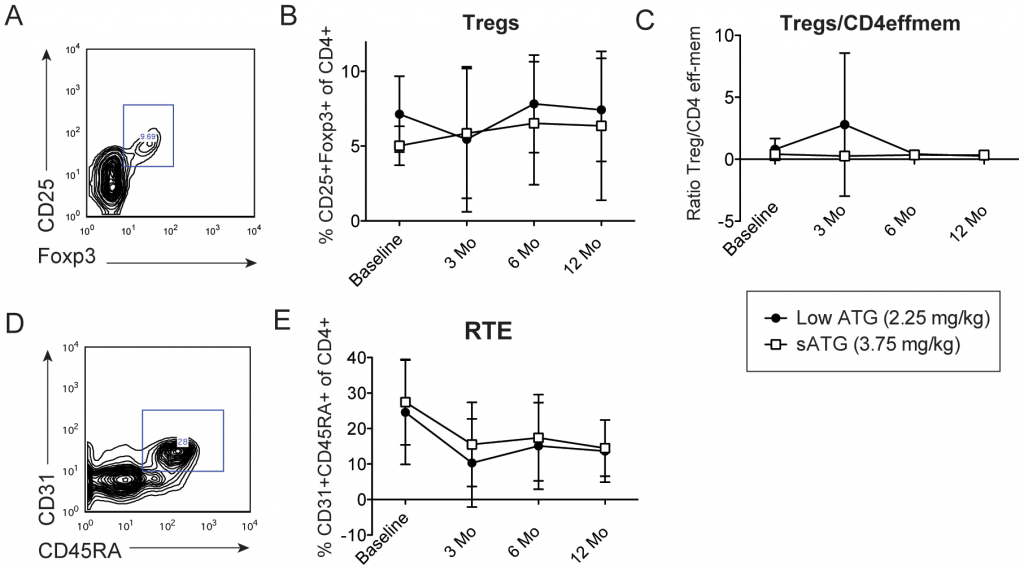Rabbit antithymocyte globulin (ATG) is commonly used as an induction therapy in renal transplant recipients, but the ideal dosage in tacrolimus-based early steroid withdrawal protocols has not been established. The purpose of this pilot study was to determine the immunophenotyping and efficacy of lower dose ATG in low immunological-risk kidney transplant recipients. In this prospective study, 45 patients were randomized (1∶1) to our standard dose ATG (total dose 3.75 mg/kg)(sATG) vs. lower dose 2.25 mg/kg (lowATG). All patients underwent early steroid withdrawal within 7 days. The primary end point was biopsy-proven acute rejection at 12 months. Prospective immunophenotyping of freshly isolated PBMCs was performed at baseline, 3, 6, 12 months post-transplant. The rate of acute rejection was 17% and 10% in the sATG and lowATG, respectively. Effector memory T cells, Tregs and recent thymic emigrants T cells had similar kinetics post-transplant in both groups. No statistically significant differences were found in graft survival, patient survival or infections between the two groups, though there was a non-significant increase in leukopenia (43%v s. 30%), CMV (8% vs. 0) and BK (4% vs. 0) infections in sATG group vs. lowATG. In sum, in low immunological risk kidney recipients undergoing steroid withdrawal, low dose ATG seems to be efficacious in preventing acute rejection and depleting T cells with potentially lower infectious complications. A larger study is warranted to confirm these findings.
Grafals M, Smith B, Murakami N, Trabucco A, Hamill K, Marangos E, Gilligan H, Pomfret EA, Pomposelli JJ, Simpson MA, Azzi J, Najafian N, Riella LV.
PLoS One. 2014 Aug 11;9(8):e104408.

